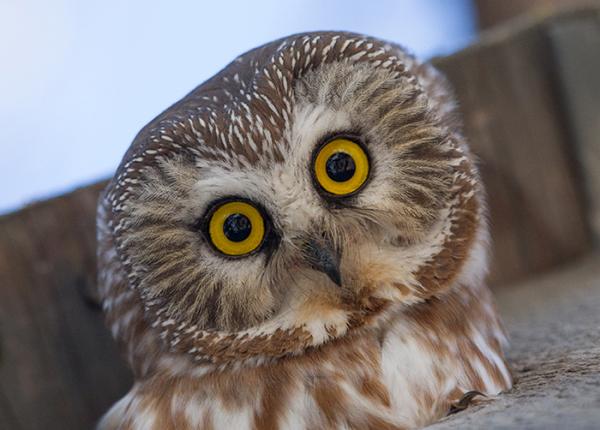- cross-posted to:
- crows
- cross-posted to:
- crows
Saw many questions and comments in the recent post about the injured Ural Owl. A happy Ural Owl is the picture here.
Read a few articles on the subject and I’ll put the best of it in comments below. Full links included if you want more or to see the article pictures.
There’s 4 articles, so just allow me a minute to get them all posted for you.
Be sure you voted in both Owl of the Year posts today! Little vs Barking and Sooty vs Eagle
I’ve crossposted this to !crows@lemmy.ml since others might be interested there. Thanks.
Very good, thank you!
I love all my corvid buddies too!
Crows are cool confirmed
I had some so by my yard yesterday. They took some of my blue jay’s peanuts. Part of me wants to befriend the crows too, but I worry that will scare away the other birds.
Hi there! Looks like you linked to a Lemmy community using a URL instead of its name, which doesn’t work well for people on different instances. Try fixing it like this: !crows@lemmy.ml
Crows vs. Owls: Enemies Ordained by Nature
Generally speaking, owls are nocturnal, crows diurnal - so that in the normal course of events they do not encounter each other. Occasionally, however, for reasons that are usually bad and certainly indicate trouble, their paths will cross.
Crows will harass, peck, annoy and mob an owl, sometimes to the death, if they discover one in the daylight. A roosting owl discovered during the day will be brutalized and occasionally killed by a mob of angry crows. I have seen a Barn Owl flushed from its roost by eager birders from a grove of cedars along the shoreline. It was quickly mobbed by crows and unable to return to shelter. The bird was attacked mercilessly by an ever increasing mob until they managed to drive it over the ocean and into the water.
Like hyenas and lions, owls and crows are destined to not get along. Lest you think the owl never wins, that is far from the case. A number of years ago I got to inspect a crow roost on the mainland that had been predated by a Great Horned Owl. The reason the identity of the predator was known was because there were 9 dead crows on the ground in perfect condition except that the top of their heads were gone and the brains eaten. This is the signature of the Great Horned Owl: completely in charge in the night. The roosting crows were easy targets for this most powerful of North American owls.
Please don’t disturb a roosting owl in the daytime - their lives depend on it.
9 dead crows on the ground in perfect condition except that the top of their heads were gone and the brains eaten
Zombie owl eats braaaaains!
GHO takes no prisoners!
It is truly the Sky Tiger. The more I learn about them, the more impressive they get.
Owls vs Crows: Brilliant Birds Battle
Though seeing a crow on its own is fairly common, with one call a single crow can summon the entirety of its flock. Crows are also highly intelligent, and each generation passes on knowledge. Crows have a long memory, and their high intelligence and ability to communicate with each other give them long memories. A crow can retain information and understands cause and effect. Crows live and travel in large groups, and each crow carries information from generation to generation. Even without ever seeing an owl, a murderer of crows knows instantly that owls are serious enemies! Crows attack owls on sight, knowing them as a serious threat that needs to be eliminated!
In addition to their astounding teamwork, crows are also quite smart and are one of the few animals that have mastered cause and effect. In fact, recent studies show that crows can use tools! Crows pass information from generation to generation and have long memories. A crow can remember specific animals and people they encountered up to five years prior as a threat.
This generational memory and understanding of cause-and-effect cause crow to attack owls during the day. Owls are vulnerable in daylight, and a murder of crows will mob an owl to prevent them from sleeping. Experts believe that this is an attempt to chase the larger predator out of the habitat to protect hatchlings. One crow will see an owl and call out to others to come to deal with the threat.
Crows vs Owls: What’s Going On?
Cats and mice, spiders and flies, and wolves and elk are all animals that we think of being arch-enemies of one another. But we can add another pair to our list: owls and crows. Anytime crows see an owl flying around they will harass it continually to try and keep the owl awake and annoyed. Although this seems cruel, the crows may not actually be the villains of our story, indeed, it is somewhat unclear who the true villain is. Regardless of which animal you support, the crow vs owl story is an interesting one to consider.
During the day crows will bother the owls that are perched somewhere sleeping, and at night the tables turn when the owls come out to hunt. Generally, owls do not predate crows. However, some of the larger breeds of owl (such as the great-horned owl) will opportunistically hunt young crows if they come upon them. While there does not appear to be a definitive answer among the scientific community about why crows expend energy mobbing owls, at any time other than during the breeding season when they are protecting their young, the prevailing theory is that crows have an innate dislike of owls and use their daylight advantage to torment their largest predator. Numerous studies have shown that crows are able to identify things that have attempted to harm them and have the ability to share that knowledge with the rest of the flock. Thus, if an owl has taken a pass at, or successfully killed a crow, the rest of the flock will likely learn about it and take the next opportunity to exact revenge, even if the attack did not happen recently. Some studies suggest that this mobbing behavior may reduce the likelihood of an owl killing a crow the next time it comes across one, which is a potential benefit to mobbing any owl a crow sees. The next time you hear a bunch of crows causing a tremendous ruckus on campus or in the Arboretum, they might be mobbing a tired owl trying to get some sleep.
This time of year is particularly important for owls because many of the owls in Minnesota are currently in their mating seasons. Generally speaking, owls are monogamous and will stay with their mate for at least the length of the breeding season. During this time they get very protective of their territory and will let out calls to make sure other owls stay away. Since they are particularly vocal in the spring, this is your chance to get into the Arboretum and try to hear some owl calls. However, if you do come across a sleeping owl in the Arb, try not to disturb it. If owls have to leave their perch, they may be driven away and kept awake by the crows, which could be detrimental to their breeding season.
Slightly off-topic, but I have noticed full on wars going on between crows and seagulls. Might be just that crows are warmongers?
They seem to occupy a similar niche of scavenging people’s unattended food, so it is probably a turf battle for the best snacks. The difference is crows work as a team, while many other birds do not.
I don’t know if I’ve come across any bad animals, many just work in ways that are strange and opposing to hire we function in human society.
Nice brief article here you may enjoy:
I am fortunate to live on the waterfront in beautiful Vancouver. The oceanside is a constantly changing vista, depending on weather, ships coming and going, and the sea, different from one day to the next as wind and weather fluctuate and tides rise and fall.
There are three species of birds at the top of the birdlife foodchain where I live. Number one is bald eagles who predate on everything. When fish are in short supply, eagles will catch and feed on crows and seagulls. Members of these flocks will often join forces to attempt to move eagles to another locale, divebombing them and squawking to no avail. The eagles regard these futile actions with disdain.
The daily schedules of crows and seagulls have long fascinated me. I used to regard the crows as the Hells Angels of the bird world; dark and intimidating and troublemakers. Seagulls; I have seen them as easy-going moochers, standing around, not doing anything in particular, taking in the scenery and when an opportunity arises, snacking on discarded fast food and an occasional fish or crab washed up onshore.
An image of man watching birds. Image By: Forest Simon, Unsplash However, after several years of observing both bird species when out on my daily walks, I now see them in a different light. Now, to me, crows are the blue-collar workers of the bird world. They are up at dawn, winging their way in pairs from their nighttime roosting areas to select feeding spots. Many homeowners become exasperated with crows as they can destroy a lawn when digging for one of their favorite snacks — the tasty grub known as the European chafer beetle. Take some time one day and watch a crow at work. They are always on the go. Never stopping for a break. Though I have never seen this, they are also known to use tools. And, not just one tool such as a stick, but multiple tools.
Crows are smart critters. And make an enemy of one at your peril. It seems they have very long memories, great human facial recognition, and can also pass along information to each other. They learn very quickly and I have seen a parent teaching a youngster how to drop a clam or a mussel on a sidewalk to break them open. And, if a picnicker happens to leave the day’s picnic lunch unattended, crows will know very quickly and so will all their family and friends.
Seagulls on the other hand are very much loners. Newly out of the nest and have learned to fly, they pretty much have to fend for themselves. I quite often see a young seagull, squeaking away at its mother of even a group of people picnicking at the beach, looking for a handout. They are not workers of the bird world. If they happen upon something to eat, they eat it. They do not work for their food like crows.
An image of a seagull standing on a rock, swallowing a startfish. Image By: The Author Seagulls just hang around until a titbit floats by. Or in the case of starfish, (one of their favorite snacks) wait till the tide goes out and they are exposed on the rocks. A seagull will just amble over, pick up a starfish and begin the job of swallowing it — that can take a while. But that’s OK. They have nothing else to do and a whole starfish is enough food for a couple of days. And that seems to suit a seagull just fine. Stand around, gaze at the world, and digest today’s dinner. They may appear lazy but they are very opportunistic. Woe the fisherman who leaves his bait or catch unattended.
Both birds are the cleanup crews of the bird world, in more ways than one. They may be garbage birds but they do a great and necessary job.
So, one should never take any bird for granted. Each one serves a purpose in nature and each one has interesting aspects that may not be apparent to the casual onlooker. And don’t think just because they are birds, they are bird brains. They are anything but!
That was a nice read, thanks for taking the time!
Yes, it was to the point with just a nice bit of artsiness to it. I’m glad you brought it up!
This link has the most info and some videos showing mobbing behavior. Click through this one if you want more info.
Also discusses nest stealing which is an interesting subject also.
Why Do Crows Attack Owls? (Chasing & Mobbing Behaviors)
Have you ever noticed when you hear a group of crows cawing & making an awful racket in the woods, there’s often an owl at the center of those mobbing birds? It’s a pretty amazing thing to see!
In fact, if you know to listen for these crow mobbing calls, it’s one of the easiest ways to find owls in the woods.
But it also brings up the question of why crows attack them so intensely?
As a general rule, crows attack owls to reduce their risk of predation. Owls do sometimes eat crows and they frequently have overlapping nest habitats which puts them in close proximity.
However, if you watch this behavior for long enough it becomes apparent that crows are expending an incredible amount of energy attacking owls.
It also sometimes seems like they’re putting themselves at risk by coming so close to a dangerous predator, and yet the owls don’t really seem to react all that aggressively.
Mobbing looks like a group of birds all crowding around the danger, calling & even dive-bombing it. If the owl flies away, mobbing crows will often pursue and chase the target in a dramatic aerial battle.
So then why do crows care so much about owls?
Well, it’s a bit of a chicken and egg situation because given the right opportunity an owl certainly would eat a crow!
However, it’s very likely that part of the reason why crows don’t get eaten more often is because this mobbing, chasing & attacking strategy is such an effective defence.
There’s simply no way of knowing how often owls would hunt crows if they weren’t being pre-emptively attacked.





